Learning to drive is a big moment in your life and it’s best to have as much information as possible. Whether you’re most excited about road trips, the drive-thru, or you want to learn to drive for work, you’re bound to have a lot of burning questions that need to be answered.
You’re probably wondering how many lessons you need, or how much learning to drive in the UK costs. Maybe you want to know how fast you can pass.
Luckily for you, PassMeFast are experts at getting people behind the wheel. We’ve helped thousands of people, just like you, pass their driving tests, and we’re here to tell you everything you need to know.
Learning to drive in the UK
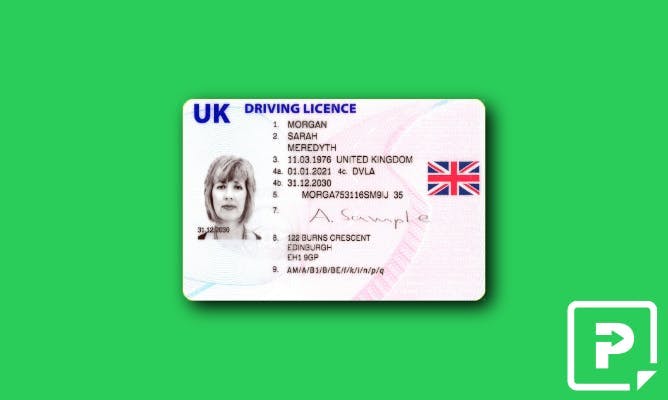
Before you start your driving lessons, it’s usually best to pass your theory test first. The theory test is a short exam designed to test your knowledge of driving rules, signs and the hazards you might come across on the road.
After you’ve boxed off your theory test, you’ll need to pass your practical driving test to become a fully-qualified driver. An examiner will assess how well you drive. They’ll mark you in lots of different categories, such as your control, positioning, and your use of speed.
But before you’re able to take the practical test, you’ll need to learn how to drive. Most people use a professional driving instructor — they’re experienced and know all about helping people learn to drive.
That’s not your only option, though. We’ll go into it in some more detail later, but some people find it easier to be taught by a friend or family member. Learning to drive in the UK can seem daunting at first, but these rules make the UK home to some of the safest roads in Europe.
When can you learn to drive?
Before you start the journey of learning to drive, you’ll need to apply for a provisional licence. This will allow you to take driving lessons, and you’ll also need it to book your practical and theory tests.
You can apply for a provisional licence when you turn 15 years and 9 months old, but in most cases, you can only start learning to drive from the age of 17. The exception to this is if you’re claiming the enhanced rate of the mobility component of Personal Independence Payment (PIP). If you do, you can take your driving test from the age of 16.
There are many reasons people put off learning to drive, but it’s best to do it as soon as you can. According to the DVSA driving test pass rates, the younger you are, the more likely you are to pass first time. This is down to a few different reasons, but mostly because your reaction times worsen as you get older. The ability to drive is a skill that you don’t really forget, so even if you don’t plan on driving regularly right away, it’s a good idea to get your licence at the first opportunity you get.
If you are older and you haven’t got around to learning to drive yet, don’t worry! PassMeFast driving instructors are very experienced and work with people of all ages, backgrounds and learning styles. You’re more than capable of passing. It’s never too late to learn, and we’d love to help you tick off that milestone.
How long does it take to learn to drive?

It’s understandable that you’re eager to get your driving lessons done and dusted and hit the road as quickly as possible. While you can do your driving course intensively and pass faster than the traditional route, the amount of lessons you need remains the same.
The DVSA suggests you take around 45 hours of driving lessons, as well as some hours of private tuition in your own car with a friend or family member. It might be possible to pass your test after taking fewer hours than recommended, but learning to drive is about gaining the skills you need to drive independently and safely for life, rather than learning how to pass a test. It’s definitely not something you should rush.
The time taken to complete those 45+ hours is really down to you and your schedule. Some people find it easier to take their time to digest all the new information and skills, whereas others prefer to learn under pressure and do it intensively.
PassMeFast can accommodate relaxed, semi-intensive or intensive driving courses. We’ll match you with a driving instructor who can work around your schedule and will teach you in a way that works best for you.
How many driving lessons do I need?
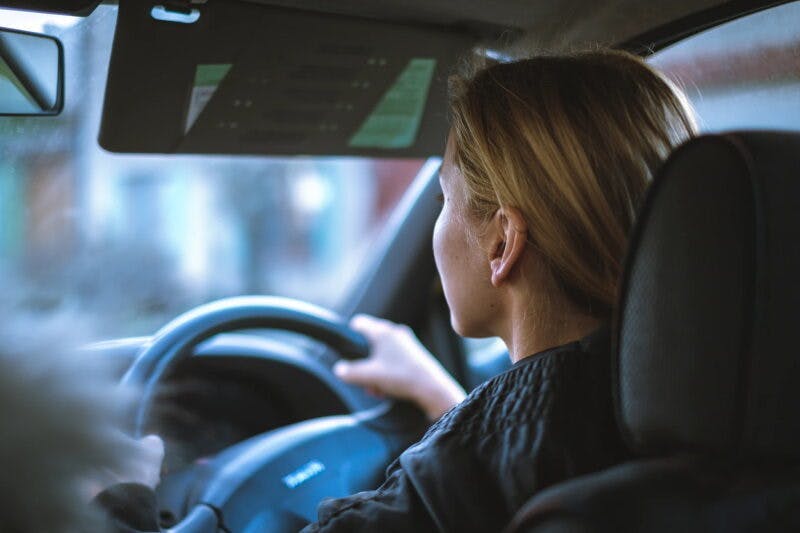
Although it’s recommended that you take at least 45 hours of professional tuition before you’re ready for your test, that doesn’t mean you need to take 45 hour-long driving lessons. If you’re somebody who learns best by immersing yourself into something and you’re determined and focused when learning to drive, you might choose to take longer driving lessons.
In most cases, driving lessons are 2 hours long which gives you plenty of time to focus on a particular area within each driving lesson. Learning to drive can be quite tiring too — you’re learning a lot, and new skills take time and repetition to develop. If you work or study alongside your driving lessons, that’s something else that might affect the length of them.
Although there are still many students who prefer to learn at a more traditional pace, the demand for longer lessons is on the rise. You could reduce the number of lessons you need to take by having longer ones. The length of a longer lesson comes down to what you and your instructor think is best, but is usually between 3 to 5 hours long.
Not only will you be able to get everything finished within a shorter time frame, but you’ll learn to keep focused on the road and, importantly, to know when to stop and take a break. This is important because, when the stabilisers are off, you might be somebody who drives long distances. Your driving instructor will schedule regular breaks into longer lessons.
How many hours does it take to learn to drive?
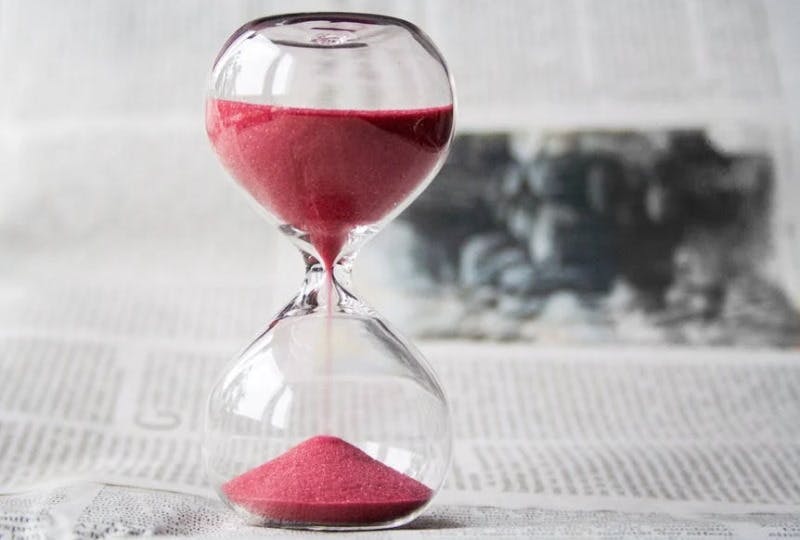
The DVSA recommends you take at least 45 hours of professional practice before you’re ready to take your driving test. Some people may have had experience driving with their friends or family before starting lessons. While that’s great, you might have picked up some bad habits that could affect your performance in the driving test So even if you have some experience of driving, it’s not recommended to take fewer hours of lessons with a driving instructor to account for that.
Another bonus to taking the right number of professional lessons is that you’re more likely to pass your test the first time. The DVSA says that 1 in 5 people fail because of a “silly mistake”. The more you practise, the less likely you are to slip up, even when you’re nervous. It’s entirely possible to pass the first time and doing so means you’ll get on the road faster. If you fail, you need to go over your weak areas and book another test, which can delay everything, cost more money and cause you a massive headache!
PassMeFast gives you some breathing space here, though. It’s frustrating when you fail, but almost 90% of people pass their driving test within the first three attempts. That’s why we offer PassProtect, giving you up to three fast-tracked driving tests for the price of one. Peace of mind, and easy on your wallet.
Average time to learn to drive in the UK
How long learning to drive takes comes down to a number of things, and it’s all about the speed at which you take it. The most important thing to focus on is getting as much practice as possible. That means taking a minimum of 45 hours of driving lessons. You should also do some private practice in your own car or somebody else’s car, if that’s an option for you.
The part that can cause the most delays is booking your driving test. The driving tuition industry suffered massively during the COVID-19 pandemic, and there’s still a heavy backlog of people wanting to pass their test. It’s hard to clear this backlog, because people turn 17 and start learning to drive every day. The demand stays constant, so the DVSA don’t get much breathing space.
With this in mind, it’s hard to give a specific figure on the average time to learn to drive in the UK. Rural areas have less demand, so it can be quicker to find a test if you live there. People in cities will find themselves waiting a little longer, as the high population means more people want to book a test.
PassMeFast will slash your waiting times by weeks or even months. Our team of experts work around the clock to secure you an early test, meaning we can fast-track you to freedom.
The cost of learning to drive
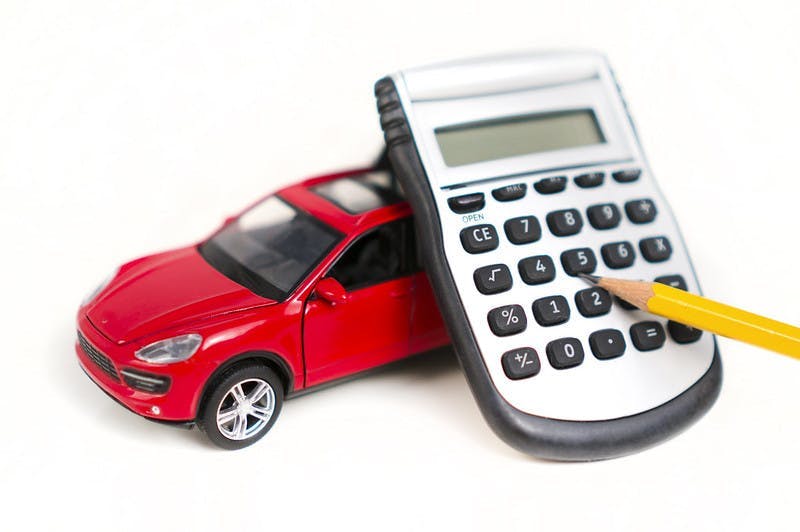
The amount of money you’ll spend learning to drive will vary depending on where you’re doing your lessons. Driving instructors work for themselves, mostly, so they are free to set their own rates. It’s always best to shop around and make sure the rate an instructor has quoted you is reasonable for the area.
Quieter areas with fewer instructors usually cost more because there’s less competition in the area, but in big cities there are lots of instructors competing for your money. As a result, they usually lower their prices to help themselves stand out from the crowd.
It might be easy to fall into the trap of assuming that an instructor who charges more is better than one who charges less, but that’s not always the case. While it’s true that an instructor who has years of experience might charge more than a newcomer, all instructors take regular tests at least once every 4 years to make sure they’re still teaching to a high standard. In theory, there shouldn’t be a vast difference between the quality of one instructor to another.
If you’re curious about the quality of the driving instructor you’re talking to, you can always ask them what their pass rates are. It might be worth spending a bit of extra money to learn to drive with an instructor who has a high pass rate.
Spending money on a driving course rather than paying for weekly hour-long lessons is usually more cost-effective in the long run. If you buy all your hours upfront, instead of doing a lesson now and then, you’ll have more motivation to complete your course. If you decide to pay as you go with driving lessons, you’re more likely to take longer breaks between your lessons, which means you need to do more lessons to get to test-standard and will end up paying more overall.
A PassMeFast driving course includes everything in the price— from booking your fast-tracked theory and practical tests to assigning you a high-quality instructor, we do it all. Not only that, but you’ll have access to our Student Portal, where you can track the progress of your course 24/7. Plus, treat yourself to some exclusive discounts on top brands while you’re there!
How to learn to drive — your options
Learning to drive isn’t as simple as getting behind the wheel of any old car and putting pedal to the metal. There are a few things you’ll need to think about first. The two most important choices are deciding what kind of car you’ll learn to drive in and who you’d like to be taught by.
The transmission of the car you choose is your first choice. You’ll need to decide whether you want to learn to drive in a manual car or an automatic. They both have a unique set of pros and cons, so there’s no wrong decision here. It’s all about choosing what works best for you.
If you pass your test in a manual car, you’ll be free to drive an automatic car too. However, if you pass in an automatic, you’ll have to upgrade your licence if you want to drive a manual car in the future.
Something else you’ll need to think about is how you want to learn. The obvious option is to be taught by a driving instructor, but that doesn’t mean it’s the only option. You can also ask a friend or family member to teach you if they meet the right criteria.
Learn to drive in an automatic car
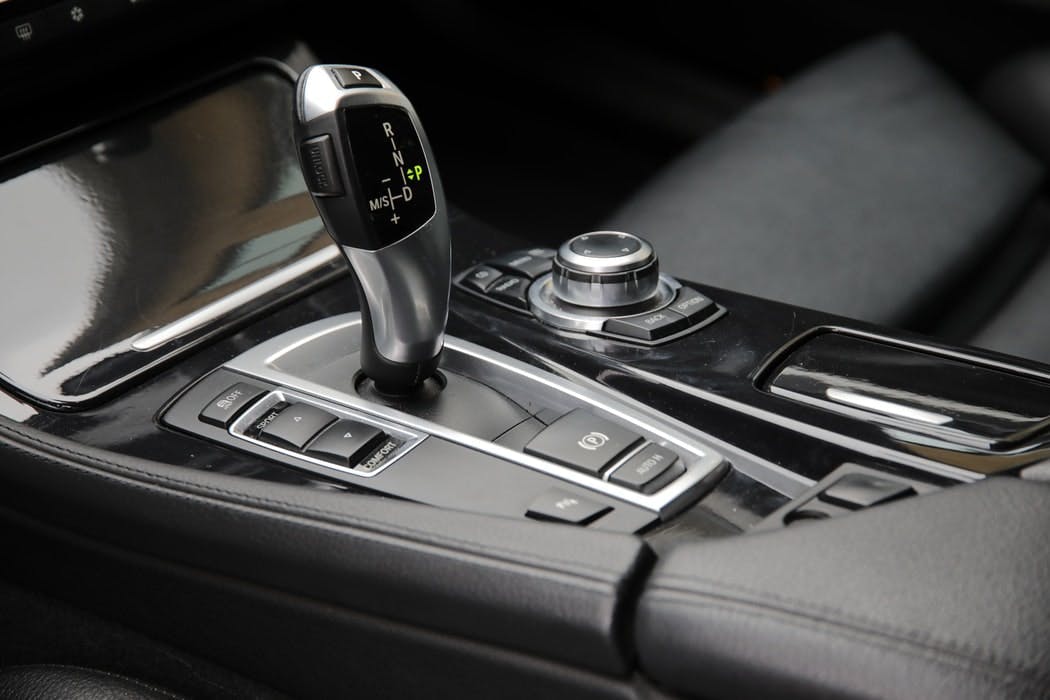
When you’re deciding what transmission to go for, you might hear that learning to drive in an automatic is the easier option. That’s true! An automatic gearbox will automatically switch gears for you, which is one less thing for you to think about. Best of all, there’s no chance of you stalling on a roundabout, which is every driver’s worst nightmare!
Learning to drive in an automatic is not only easier, but you’ll be preparing for the future too. The UK is planning to ban all new petrol and diesel cars from 2030. This means that any new car will need to be electric, using an automatic gearbox. It might be worth taking this into consideration since you’ll most likely be driving an automatic car in the not-so-distant future.
The downside to learning to drive in an automatic is that it can be more expensive. Automatic gearboxes are more high-tech, so the cars cost more to buy and that extra cost gets passed down in pricier driving lessons. If you want to learn to drive on a budget, then automatic might not be the best route for you.
Learn to drive in a manual car
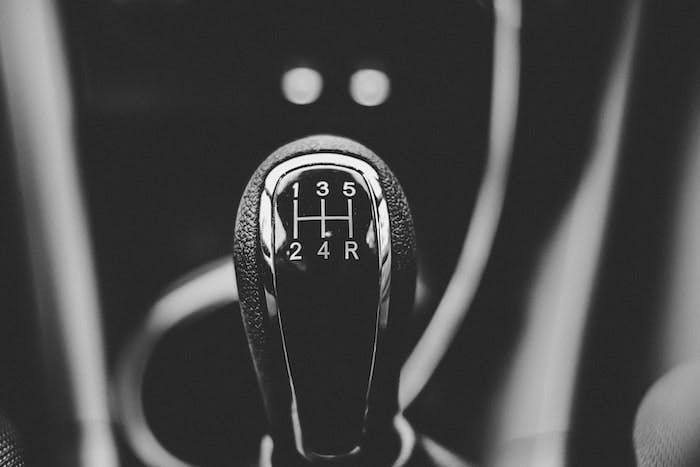
If you don’t want to drive an automatic car, the other option is a manual. Manual cars are a bit more difficult to drive. As the name suggests, you need to change gears manually when driving, which can be quite challenging and takes a lot of practice.
It’s also a skill that you might not even be able to use in the future. When the UK bans new petrol and diesel cars in 2030, any new car you buy will be an automatic and in time manual cars will become rarer. You should ask yourself whether it’s worth making your driving lessons more challenging for the sake of learning skills that will eventually become outdated.
Learning to drive in a manual car is still a popular choice, though. If you pass your driving test in a manual, you can drive both manual and automatic cars, so your options aren’t limited. Not only that, but manual driving lessons are usually cheaper, so you’ll be able to afford more lessons.
Having said that, you might need more lessons in a manual because you’ll need to get to grips with changing gears and using the clutch pedal. Taking that into consideration, you could say that automatic lessons are the most cost-effective choice.
Whatever transmission you decide to go with, PassMeFast has over 5,000 experienced instructors who can help you learn to drive in either a manual or an automatic car.
Learn to drive in your own car
If you’ve already got a car, or if a friend or family member is happy to teach you to drive, there’s always the option of learning to drive in your own car. It might be tempting to skip the driving lessons and learn independently, but it’s recommended that you do at least some lessons with a driving instructor.
It’s definitely a good idea to do some private practice outside of your driving lessons. The DVSA recommends you do some driving in your own car, as well as with an instructor. You’ll learn to drive in different cars, and you’ll get some experience of driving in different weather conditions and times of day.
As much as you might like to, you can’t just get into a car and drive off by yourself. As a learner driver, you need somebody to be with you at all times. Anybody teaching you to drive needs to be over the age of 21, needs to have had their licence for over 3 years and must be qualified to drive the vehicle they’re teaching you in. That means if you’re learning in a manual car, they need to hold a manual licence.
A word of caution though —your parents, grandparents, or whoever is teaching you might have picked up some bad habits. If you repeat these bad habits in your test, it could lead to you racking up faults and even failing. That’s why it’s important to use these sessions to practise what your instructor has already taught you. Remember, your instructor is the expert and knows exactly what examiners are looking out for.
If you want to do some driving in your own time, you’ll need to take out a learner driver insurance policy. You don’t need to do this with a driving instructor because their business insurance will cover you, but it’s illegal to drive a car as a learner without having some kind of cover.
PassMeFast has teamed up with Marmalade to offer you the best-value learner driver insurance out there. You’ll get instant online cover with a sweet saving, and all with no risk to the car owner’s No Claims Discount.
Learn to drive with an instructor
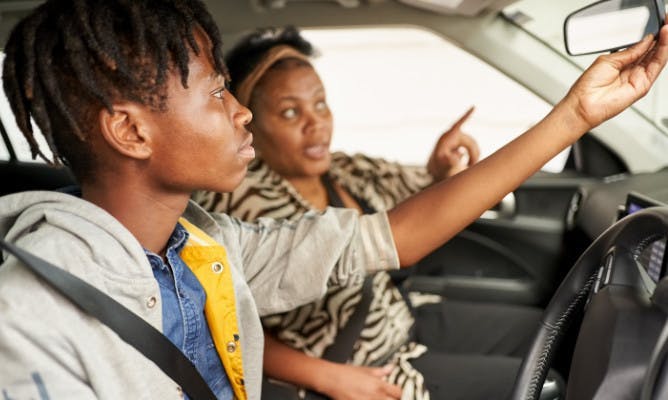
The obvious choice is to use an instructor to help you learn to drive. In fact, the chances of you passing your test without professional driving lessons are very slim. Instructors go through lots of training to make sure they’re teaching you to a high standard, and they know all the things examiners will look out for on your test.
They also know driving test routes like the back of their hand. This is the route your examiner will take you on during your driving test, so your driving lessons will focus on the roads in this area and you’ll know exactly where you’ll be driving on the big day.
There are two types of driving instructors: Potential Driving Instructors (PDIs) and Approved Driving Instructors (ADIs). PDIs are in the training process to become ADIs, but they’re usually just as skilled as ADIs. In fact, they might even put in a bit of extra effort to help you pass because they’re looking to impress the DVSA and become an ADI.
Your driving instructor can also come along to the test with you, if you’re happy with that. There’s no pressure either way, but it can be a useful tool in case you fail your test. You’ll be so focused on your driving that you might not pick up on the mistakes you made, but your instructor will be able to let you know where you went wrong. You can use that to focus on certain areas of your driving before you take another test.
When you learn to drive with an instructor, you’ll be able to use their car for the driving test. You won’t need to worry about finding your own car, making sure it meets the rules and insuring it. You’ll just use the car you’ve been learning in.
The best way to learn how to drive
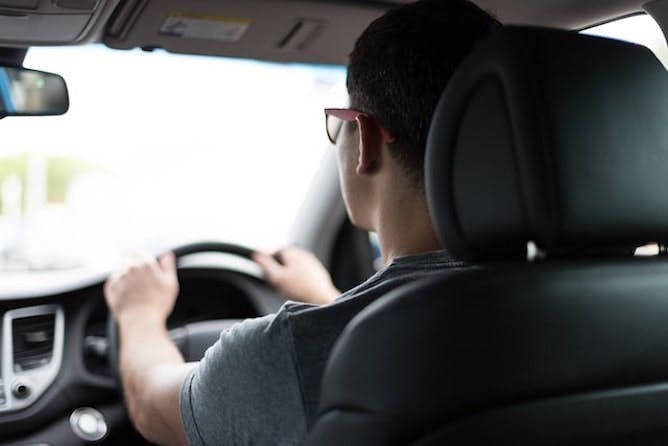
Learning to drive can be difficult, and it takes a lot of hard work and determination. If you’re feeling daunted, try to think about how great it’ll feel when you’ve finally passed your driving test and you can hit the road on your own.
It’s recommended that you study for your theory test first. You might be eager to start your lessons right away, but it’s actually easier to drive when you already know the rules of the roads and what the different road signs and symbols you’ll come across mean. When you pass your theory test, you’ll have 2 years to pass your practical driving test. If you want to give yourself an extra challenge, try to give yourself a date you want to pass by. This will give you extra motivation and something to aim for, which is essential to learning a skill as complex as driving.
If you’re going to learn to drive, you’ll need to be taught by a professional instructor. It’s almost impossible to pass a driving test without tuition from an expert. Whether you choose to be taught by a PDI or an ADI, your instructor will equip you with the skills and knowledge that you’ll use for the rest of your life. It might seem difficult now, but it’ll become second nature to you with experience and confidence.
It’s best to take it seriously and give it your all, which is why an increasing number of people are choosing to opt for driving courses rather than traditional weekly driving lessons. Buying a driving course is a commitment to yourself and your new skill. It might just be that extra push of motivation you need on the days when you’re feeling overwhelmed.
PassMeFast courses include everything you need, from the start of your journey to the end. We can book a fast-tracked theory test and give you an online tuition session from our resident experts. Once you’ve boxed off your theory, the exciting part begins. We’ll match you with an instructor in your area and you’ll work closely with them to learn everything you need to know in order to pass fast and drive safely for life. From there, all that’s left is for you to pass your fast-tracked driving test. You can do it!
Can you learn to drive in a week?
When you’re shopping around to find the best place to learn to drive, you might come across companies who offer one-week driving courses. They promise that you’ll get into a car for the first time on Monday, and by the following week you’ll be reverse-bay parking, tackling roundabouts and cruising down the motorway all by yourself. How exciting!
Unfortunately, as you might expect, these courses are usually too good to be true. The DVSA recommends you take 45 hours of professional driving lessons before you take your test. That would be incredibly difficult to box off in a single week. Doing the maths, if you had driving lessons for 7 days straight, you’d be looking at around 6.5 hours of lessons per day. That’s a lot of work! You’d basically be making learning to drive your full-time job for the week…
You might be able to squeeze all those hours in and learn to drive in a week if you put your mind to it, but it’s not ideal. Driving is about more than just passing a test. After that, you’re left to your own devices — nobody will be there to take control of your car if you make a mistake. You need to give yourself time and space to digest everything you’ve learned, and to practise it in your own time.
One-week driving courses are more suitable for people who already have some experience under their belt. If you’ve done a lot of driving lessons in the past and you just want to brush up on a few skills before the test, you could do a quick refresher course a week before the test.
PassMeFast have courses that suit everybody. Whether you’re a complete driving beginner, or you just need a hand in a few tricky areas, we have courses tailored to you.
Top tips for learning to drive

If you’re thinking about getting behind a wheel for the first time, there are lots of hurdles you might come across. Here are our top 3 tips for making the most out of your experience:
Timing is everything
It’s understandable that you want to get your test out of the way as quickly as possible. However, it’s important for you to manage your expectations and consider the waiting times for driving tests in your area. With test backlogs and examiner strikes, driving tests are often in short supply and you could end up waiting months for one.
There are two traps learners often fall into here. The first is waiting until they’ve finished their lessons to book a test. If you’re feeling confident and ready to go, you might feel disheartened to see that you can’t just pick up a test for next week. In some cases, you’ll be waiting months for one.
You’ll face a tricky decision here. You could pay for more lessons to bridge the gap between your last lesson and your test date, or you might decide not to take any more lessons and just wait for your test. The problem is that since driving is a new skill to you, it’s best to take the test when everything is still fresh in your mind. If you haven’t driven for months by the time your test comes around, you may forget some of the skills you learned or fall into old habits. This is a costly mistake — your wallet won’t thank you for it.
On the other hand, if you have a driving lesson booked and wait until the week before to start lessons, you’re already setting yourself up for failure. People learn to drive at different paces and it’s hard to predict how long it’ll take until you’re ready. You’ll then need to push your test back by months, which will delay everything and take even longer.
The solution is a balance of the two options. Book a test in advance to give yourself a date to aim for, but leave yourself with plenty of time to do your lessons and account for any delays or mistakes you might make — this is the tried-and-tested way that PassMeFast has used to help over 50,000 learners get on the road.
Everybody makes mistakes
Hannah Montana was right — everybody has those days. Many people get frustrated when they make mistakes, but try to shift out of that mindset when you’re learning to drive. Mistakes are a given, and they give you an opportunity to learn from them.
Even the most experienced driver had to start somewhere, and you’re no different. Learning to drive is supposed to be difficult. You’re in charge of a machine that could do a lot of damage if you use it wrong, so it’s important for you to learn how to operate it correctly.
The point of driving lessons is to give you the space and freedom to make mistakes without worrying about the consequences. Your driving instructor will have a dual-controlled vehicle, which means they can step in before anything dangerous happens.
Other drivers will be aware that you’re learning too. When you’re driving, your driving instructor will make sure to clearly display L-plates on the car. This lets other drivers know that you’re not as experienced as them, and they’ll likely give you more room and be more understanding if you do something wrong.
Where you learn to drive is important
It’s always best to learn to drive in the area you’ll be driving in most. In most cases, that’ll be your hometown or city. Driving in a city can be very different to driving in a more rural location, for example. You might find it easier to drive on country roads, but it’s not reflective of how you’ll be driving in the real world.
If you’re worried about pass rates in your local area, don’t be. Pass rates aren’t very reflective of how well you’ll do on the test. It all comes down to whether you can drive or not. The pass rates are more for the team at the DVSA to worry about. If you pass your test in one place, you should be able to pass your test anywhere.
Tips for passing your driving test
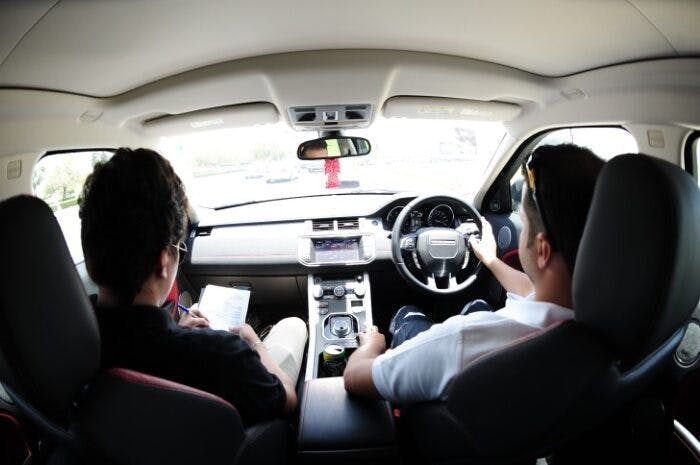
It’s the day you’ve been waiting for. If things go well, you’ll get your pink licence and the keys to freedom. You’ll be able to go anywhere, anytime, and a whole host of opportunities will open up for you. Want to boost your chances of passing? Follow these 3 quick tips:
Try to calm your nerves
The day of your driving test is big! Every driver remembers it well. It’s almost like going back to school and having to take your exams all over again. You might be anxious about being watched so closely, or maybe you’re worried you’ll fail. Whatever is stressing you out, try to find something that will relax you before your driving test.
Your negative thoughts come from your body going into fight-or-flight mode. Your brain is a complex thing. It perceives your driving test as a danger and wants you to run from it. To make you do this, it creates negative thoughts in the hope you’ll listen and avoid it altogether. The thing to remember is that your thoughts aren’t always correct. To combat your nerves, try to think of cold, hard facts that make you feel better. You know your manoeuvres. You’ve learned a lot. Your driving instructor thinks you’re ready.
If you have time before the test, give yourself an hour to do something that usually distracts you or calms you down. That could be anything from listening to music, playing video games, or meditation.
Stick to what you know
When you make it to your driving test, try not to be swayed by what other road users are doing — you’re the one who’s being marked by the examiner. Focus on what you’ve been taught by your instructor and stick to that guidance. Don’t increase your speed when it’s not needed. Don’t let the car behind you pressure you into emerging from a junction if it’s not safe to do so.
By this point, you should know everything you need to pass. Be confident in your skills, but don’t let your confidence turn into recklessness.
Stay one step ahead
You wouldn’t go into an English exam without knowing what you’re being marked on. The same goes for driving. You should make sure you know the things your examiner will be watching for. Your driving instructor probably went through this with you, but it doesn’t hurt to do some research yourself.
Some of the 10 most common reasons people fail their driving test are a lack of observation, hesitating, or not giving the correct signals. Focus on those kinds of areas and make sure you don’t fall into the same traps as everyone else.
Summary
Learning to drive is one of the best skills you can give yourself. It’s a big challenge, but the rewards it gives you are more than worth it. Rather than becoming overwhelmed with the rules and regulations, consider how great it is that the UK takes the safety of its roads so seriously.
When you’re ready to learn to drive, you want to focus on your theory test and your driving lessons. That’s understandable. PassMeFast will take the weight off your shoulders and do the admin for you. You won’t have to worry about the boring bits. Whether you’re a complete beginner or a seasoned pro, we have a course for you.
Give us a call on 0333 123 4949 or book online to get started right away.
Learning to Drive FAQs
When can you learn to drive?
You can apply for a provisional licence when you turn 15 years and 9 months old, but in most cases, you can only start learning to drive from the age of 17. The exception to this is if you’re claiming the enhanced rate of the mobility component of Personal Independence Payment (PIP). If you do, you can take your driving test from the age of 16.
How long does it take to learn to drive?
The DVSA suggests you take around 45 hours of driving lessons, as well as some hours of private tuition in your own car with a friend or family member. It might be possible to pass your test after taking fewer hours than recommended, but learning to drive is about gaining the skills you need to drive independently and safely for life, rather than learning how to pass a test. It’s definitely not something you should rush.
How many driving lessons do I need?
Although it’s recommended that you take at least 45 hours of professional tuition before you’re ready for your test, that doesn’t mean you need to take 45 hour-long driving lessons. If you’re somebody who learns best by immersing yourself into something and you’re determined and focused when learning to drive, you might choose to take longer driving lessons.
How many hours does it take to learn to drive?
The DVSA recommends you take at least 45 hours of professional practice before you’re ready to take your driving test.
Can you learn to drive in a week?
The DVSA recommends you take 45 hours of professional driving lessons before you take your test. That would be incredibly difficult to box off in a single week. Doing the maths, if you had driving lessons for 7 days straight, you’d be looking at around 6.5 hours of lessons per day. That’s a lot of work!
Subscribe for driving advice, offers & more
We'd love to let you know about our courses, news and offers via email. You may unsubscribe at any time.
Star Genie Limited trading as PassMeFast. Company number 10093359
Copyright © 2024 owned by Star Genie Limited
PassMeFast, Blue Tower, MediaCityUK, Salford, M50 2ST
